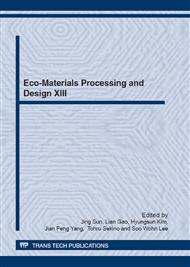p.3
p.7
p.12
p.17
p.21
p.25
p.29
p.33
MLCA (Material Life Cycle Assessment) for ITO Recycling
Abstract:
Recently, touch screen is one of the most popular pieces of electrical and electronic equipment in our society, such as laptops, cellular phones, and digital cameras. Indium tin oxide (ITO) is mainly used to make transparent conductive coatings for touch and flat screen. Therefore, there is an increasing demand accordingly. Although accounted for 1% of the touch screen, indium is rare metals. Consequently, it is important to Recycling ITO for National Strategies about Resource Conservation, and reduce Environmental burden. The case which disuses ITO like landfill or incineration, it cloud be harmful to the human health in the long-term. This study intended to identify the environmental aspects with the ITO recycling. The potential environmental impacts were evaluated by using Material Life Cycle assessment method (MLCA). As the result of this study, MLCA would provide more information for environmental issues of ITO. So that it is possible to improve the environmental issues by the monitoring that could be useful and effective for ITO. The study includes two scenarios, the basic scenario is recycling of ITO (10, 20 and 30%) and the other scenario is landfill of ITO.
Info:
Periodical:
Pages:
12-16
Citation:
Online since:
June 2012
Authors:
Price:
Сopyright:
© 2012 Trans Tech Publications Ltd. All Rights Reserved
Share:
Citation:


